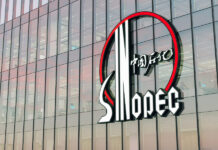There are different sizes of investors and financiers with different needs for financial services on the capital market. These are determinants indicating that the capital market should be a multi-tier marketplace.
The capital market in China has long been abiding by the principle that “the centralised trading market should come first, followed up by the over-the-counter [OTC] market”, and so the number of listed companies on each board reflects an “inverted pyramid” structure.

Wu Jian
中伦文德律师事务所
合伙人
Partner
Zhonglun W&D Law Firm
However, the number of companies listed on the New Third Board has increased four-fold in the past year. The experience of developed countries suggests that the number of companies listed on the OTC market should be significantly higher than that on-floor. The New Third Board, a breakthrough made in China’s multi-tier capital market system, will usher in broader space for development.
Yang Xiaojia, the chairman of National Equities Exchange and Quotations (NEEQ), which operates and manages the New Third Board, has proposed tier management when the number of companies listed on NEEQ reaches between 800 and 1,000. He believes the provision of differentiated services targeted at different companies by means of tier management can effectively retain quality companies.
Tier management is imminent because the number of companies listed on the New Third Board has reached 856 as at 9 July 2014 (as shown in the accompanying table), exceeding the number requirement proposed by Yang. Some “happy problems” have come along with the expansion of the New Third Board. On the one hand, following its expansion across the country with government support, companies are flocking to seek a listing because of its low threshold and high inclusivity, which has made the New Third Board gain enough popularity.
On the other hand, it is precisely because of the low threshold that the quality of the companies listed varies considerably. Among the 856 listed companies, the differences are substantial in terms of their estimated value and liquidity, because no limits are set on financial indicators, technological innovation, size and performance. How to effectively manage the New Third Board and retain quality companies has presented a problem for the regulators.
When the number of companies listed is sufficient, the New Third Board in fact already has the potential to qualify as a mature capital market, thus making tier management necessary. In future, listed companies will be required to choose to upgrade or downgrade themselves on the New Third Board. How to switch to other marketplaces within the New Third Board could then become a hotly debated issue.
The author believes the proposed internal tier standards should at least cover the following aspects: (1) earnings growth of companies; (2) corporate governance standards, internal control and ultimate information disclosure; (3) investors of companies and investors’ evaluation of companies; (4) circulation of equity transactions; (5) integrity of the management of companies as well as whether the management is involved in irregularities; and (6) general information about the regulation of market makers and market makers’ evaluation of companies.
Three categories of companies can be distinguished by means of the level of the internal marketplaces on the New Third Board. The first category consists of companies possessing a number of advantages such as good profit status, governance norms and recognition by investors. These are companies that need to be publicly recommended to investors, and can even switch to other boards for a listing in future.
The second category includes companies that are in the “pending zone”, in which they may be granted a certain buffer period. If they have positive development, then they can be placed under the first category. If the development continues to decline, they will be put under the third category. The third category comprises companies for which, after being graded, it is not necessary and meaningful to be listed on the New Third Board. These companies can be delisted directly.
The NASDAQ is an OTC market that is internally divided into three marketplaces, namely the NASDAQ Global Select Market, NASDAQ Global Market and NASDAQ Capital Market.
Overseas experience
The categorisation design for US OTC markets sets a good example for the New Third Board in China. The US OTC markets are divided into three tiers, ranging from high tier to low tier – namely OTCQX, OTCQB and OTC Pink.
The OTCQX is the highest tier, which includes quality companies with the largest size and the best liquidity. They provide efficient and timely trading, as well as transparent and accurate information disclosures for companies in the US and around the globe, paving the way for companies that intend to upgrade themselves to the normal NASDAQ market. Higher access thresholds are set for the companies listed on the OTCQX, like high financial standards, timely disclosure of information and requirement for sponsorship by a professional third-party adviser.
OTCQB is the middle-tier marketplace, which includes small or growing US companies, in the entrepreneurial stage, having a reporting obligation to US regulators (such as banks and insurance companies). Since no minimum financial standards are required, trading price information about the stocks of shell companies and penny stocks disclosed to regulators is made transparent by the full use of an electronic quotation system.
OTC Pink is for all companies that may be involved in breach of contracts, bankruptcy and reorganisation crisis. Companies in this category are further categorised by the level of information they provide to investors and may have current, limited or no public disclosure.
北京市朝阳区西坝河南路1号
金泰大厦19层
邮编:100028
19/F, Golden Tower
1 Xibahe South Road, Chaoyang District
Beijing, 100028, China
电话 Tel:+86 10 6440 2232
传真 Fax:+86 10 6440 2915/2925
电子邮箱 E-mail:
wujian@zlwd.com
www.zhonglunwende.com






















